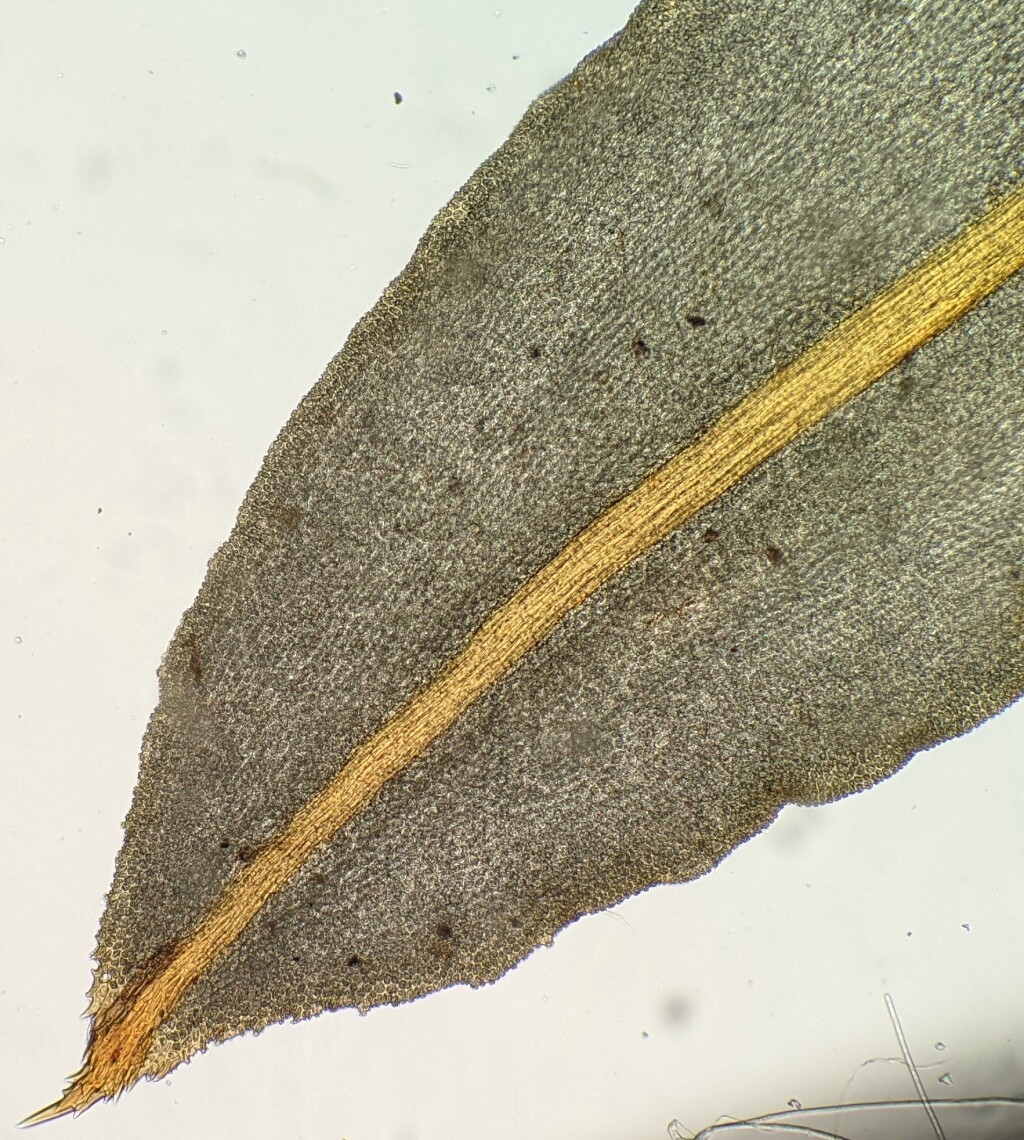Syntrichia rubra
(Mitt.) R.H.ZanderDioicous. Loose tufts on soil, rarely rock. Plants reddish, light green to yellowish-green or brownish-green. Stems simple or branched, 20–80 mm tall. Leaves erect-spreading to recurved when moist, twisted and with the apices variably spreading when dry, broadly to narrowly oblong-lanceolate, to 5.5 mm long, concave to carinate; apex acute; costa excurrent in a short hyaline-tipped point; margin dentate or denticulate near apex, often slightly undulate, recurved to c. mid-leaf; laminal cells in apical half rhomboid to irregularly hexagonal, mostly isodiametric, 12–40 μm long, 10–25 μm wide, papillose, becoming smaller and forming a yellowish border at margin; basal laminal cells narrowly linear, narrower at margin, 40–150 μm long, 10–25 μm wide, pale yellowish to hyaline. Seta 12.5–30 mm long, reddish, twisted. Capsule narrowly cylindric, 2.5–5 mm long, slightly curved.
VVP, EGU, HNF, VAlp. Among alpine and subalpine vegetation throughout the Victorian alps east from the Snowy Range. Also NSW, ACT, Tas and Macquarie Island. New Zealand and Campbell Island.
 Spinning
SpinningSynonyms
Misapplications
Seppelt, R.D. (2004). The moss flora of Macquarie Island. Australian Antarctic Division, Department of Environment and Heritage, Kingston, Tasmania.
